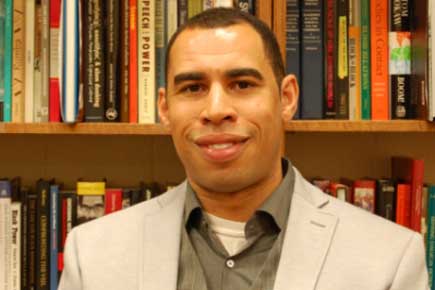Where the Negroes Are Masters: An African Port in the Era of the Slave Trade by Randy J. Sparks, and: Another America: The Story of Liberia and the Former Slaves Who Ruled It by James Ciment (review)
Journal of the Early Republic
Volume 34, Number 4, Winter 2014
pages 686-690
DOI: 10.1353/jer.2014.0068
Andrew N. Wegmann
Louisiana State University
Where the Negroes Are Masters: An African Port in the Era of the Slave Trade. By Randy J. Sparks. (Cambridge, MA: Harvard University Press, 2014. Pp. 309. Cloth $29.95)
The Atlantic slave trade stands at the center of Atlantic World studies. Indeed, the centuries-long trade in human beings from the coast of Africa to the Americas and Europe has come to define how each society bordering the Atlantic explains its cultural and racial demographics. Tales of families torn apart for the profit of a white man, of countless numbers taken across the Atlantic and forced into the fields of Jamaica, South Carolina, and Virginia, have fascinated and frustrated scholars and readers for decades. But rarely have these stories looked back to their origins, situating Africa at the center of the trade and the Atlantic community that made it possible. In Where the Negroes Are Masters, Randy Sparks does just that.
The strength of Sparks’s work lies in its uncommon approach. By placing the West African town of Annamaboe at the heart of the Atlantic slave-trading world, he shifts the academic focus of the slave trade from American fields and British trading houses to a Gold Coast trading town in which Africans call the shots, make enormous profit, and interact as commercial equals with European slavers. Sparks does not mince words, claiming that “the successful, capable, and wily merchants of Annamaboe were as integral to Atlantic commerce as those of Liverpool, London, Cádiz, Nantes, Charleston, New York, or Kingston” (3). Ruled and ‘‘owned’’ by the Fante people, Annamaboe was a place of commercial as well as cultural exchange, a site where the colonial powers of Europe entered into agreements and treaties with the reportedly ‘‘savage,’’ ‘‘barbarous’’ blacks of Africa. It was a place to which England sent its youngest, brightest captains to serve as governors before they rose in the political ranks to North America and the Caribbean. In return, the leaders (called caboceers) of Annamaboe frequently sent their sons to London and Paris for education, trading experience, and acculturation.
But, as Sparks points out, this was all a game. The caboceers at Annamaboe knew that both England and France wanted the thousands of slaves leaving the coast each year. The young men sent to London and Paris from Annamaboe, like the famous William Ansah Sessarakoo, son of the powerful caboceer John Corantee, imbibed European culture while also acquiring an intimate knowledge of the European side of the trade— profit margins, active political disputes, anything the leaders at Annamaboe could use to outwit and manipulate their European buyers.
Indeed, on a number of occasions the French and English nearly came to blows over the right of deposit at Annamaboe Road, the town’s primary port. In the end, the English muscled the French out of the region, and constructed a fort in town, for which they paid tribute, rent, and customs duties.
The relationship between Africans and Europeans did not stop at the trade itself. English merchants, traders, and governors residing in town often took ‘‘country wives’’—African women, sometimes mixed-race, who provided relief of carnal urges as well as connections in Annamaboe’s merchant elite. Richard Brew, an Irish-born trader who arrived at Annamaboe around 1745, became the wealthiest, most powerful private trader on the Gold Coast due in part to his ‘‘marriage’’ to John Corantee’s daughter. They lived together at Brew’s Annamaboe mansion (called ‘‘Castle Brew’’), and raised three mulatto children, all of whom took their father’s surname and served as interpreters and traders for Annamaboe until the early nineteenth century. As Sparks explains, the mulattoes, of which there were many along the Gold Coast, bridged the cultural and racial gap manifested in their pedigrees. Some served as soldiers for the English aboard slavers and in forts, positions strictly reserved for the mixed-race sons of European officials. Others, like the Brew children, served as interpreters, political representatives, and port traders for the caboceers. Many were Christian. Nearly all spoke both English and Fante, as well as ‘‘creole’’ (which Sparks never fully defines), and dressed in European stylings. They were the products of the cultural and racial exchange that brought Annamaboe, and the rest of the Gold Coast, into the heart of the Atlantic World.
Although central to the commercial and cultural development of the Atlantic World, Sparks’s…
